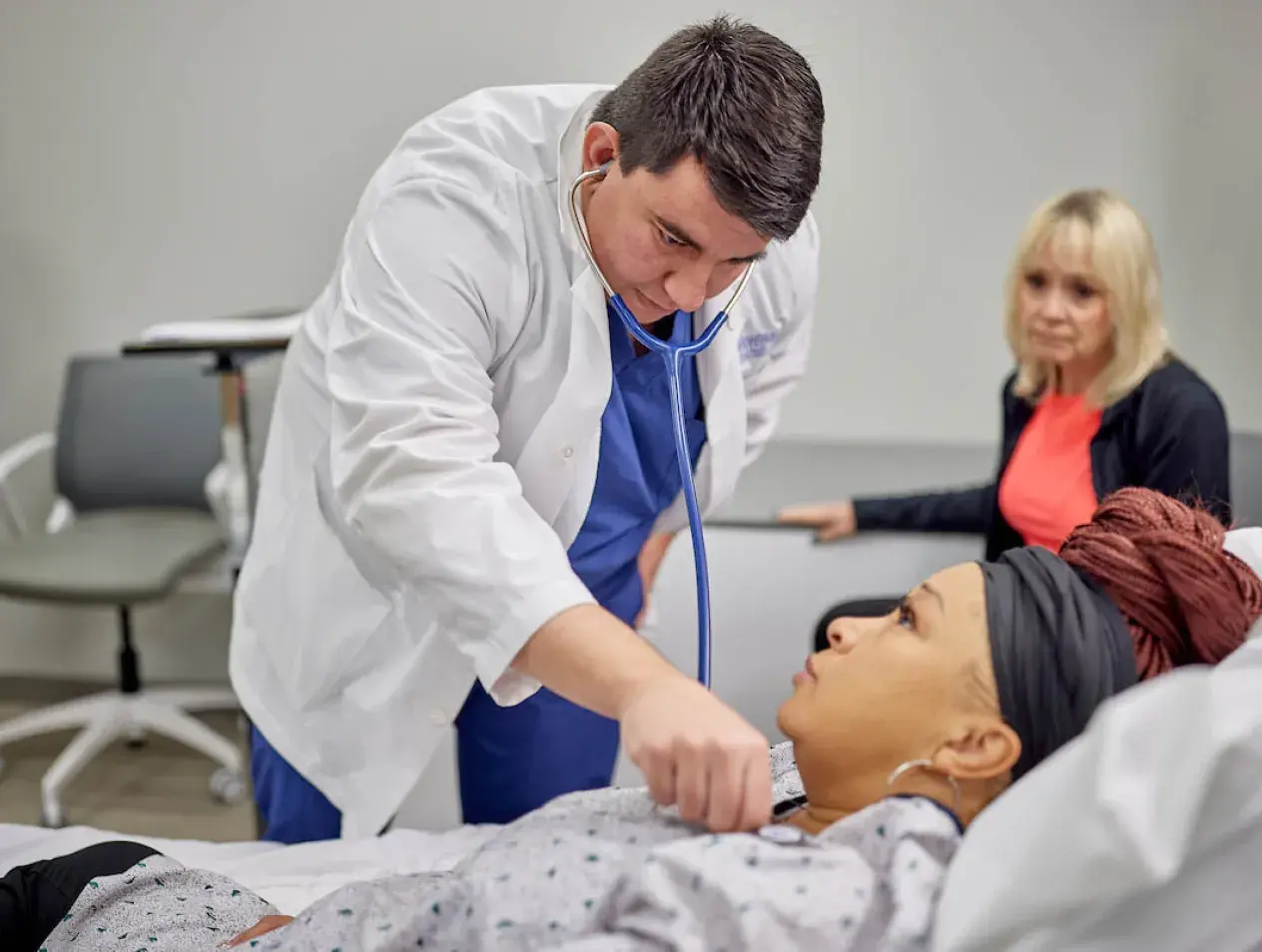
Simulation Education
Interprofessional, Hands-On Learning
Simulation education makes up over 35,000 square feet of dedicated interprofessional simulation space across three floors of the Virginia G. Piper Charitable Trust building on Creighton University’s Phoenix Health Sciences Campus. The center offers:
- 16 clinical exam rooms
- Nine single patient hospital rooms
- An operating room/trauma bay
- Mock pharmacy with compounding space
- A multipurpose wet lab
- A simulated apartment for home healthcare
- An ambulatory care lab
- A clinical exam lab
- A rehabilitation lab
Here, learners gain skills and confidence in a safe, encouraging and realistic environment. Simulation experiences follow standards of best practice and evidence-based research, providing students with unparalleled opportunities to provide holistic, team-based care.

Health Professions Supported

Simulated Scenarios

High-Fidelity Simulated Patients

IPE Hours Available
Learning Through Simulation
Simulation provides a safe environment for learners to practice free from the possibility of patient harm. Students can examine real-life consequences of interventions and develop understanding and competency through repetition.
At the conclusion of each simulation event, a guided learner-centric debrief is performed, offering detailed feedback and evaluation. Research has shown that debriefing is an important component of simulation. This gives learners an opportunity to reflect on their simulation experience, make connections between learning concepts and interventions, and provides an opportunity for emotional expression.

Vision and Mission
Vision
Leading the world in interprofessional healthcare simulation education and research that focuses on cura personalis or care for the entire person.
Mission
Guided by the Jesuit traditions of Creighton University, we offer exemplary evidence-based simulation experiences that prepare our learners to succeed in collaborative, team-based healthcare.
Standardized Patient Program
The standardized patient program provides a safe and controlled environment that allows students to develop proficiency in critical thinking, communication and patient care. Standardized patients are hired to portray real patients. They are extensively trained to provide the history, personality, symptoms and patient’s emotional state accurately and consistently. These portrayals are a vital part of a students’ time at Creighton and help confirm students are ready to serve real patients.
We invite anyone interested in becoming a standardized patient to fill out our standardized patient application.
Expand below for Standardized Patient FAQ
Who can be a standardized patients?
Our standardized patients come from a variety of backgrounds, and most do not have prior healthcare experience. Instead, a standardized patient focuses on the history, body language, personality and even emotions of the patient. After the encounter, the standardized patient also provides feedback to student from the patient’s point of view and provides critical information on improvement.
What is a standardized patient encounter?
A standardized patient encounter is similar to the experience a healthcare provider would have with a real patient. Usually, encounters take place inside one of our 16 clinic exam rooms and the student and standardized patient work together to go through the healthcare “visit.” Standardized patients may also play the role of a patient inside a hospital setting or as a loved one. Student interactions are video recorded and after interacting with the patient, students must complete notes or questions detailing their experience. Afterward, students receive written and verbal feedback both from the faculty observer as well as the standardized patient. Often times, it is the feedback from the standardized patient that is most meaningful and impactful to the student.
How do I become a standardized patient?
If you enjoy interacting with people, helping teach students and can provide constructive feedback about your experiences, then a role as a standardized patient may be for you!
Please complete the Standardized and Simulation Patient Profile Application and a member of the Simulation team will get back to you as soon as we can.
Please note, due to high volume of emails, applicants may not receive a response right away. If you do not hear from us within 30 days, please call our main office line at 602.812.7295.
Simulation Team

Andrew Benavidez, MHI, CHSOS
- Simulation Technologist
- 602.812.4613
- View Profile

Amy Ciampi, MS
- Anatomy Lab Supervisor
- 602.812.4765
- View Profile

Lydia Corbin
- Standardized Patient Manager
- 602.812.4614
- View Profile

Eric Penn, MHI
- Simulation Operations Manager
- 602.812.4584
- View Profile














